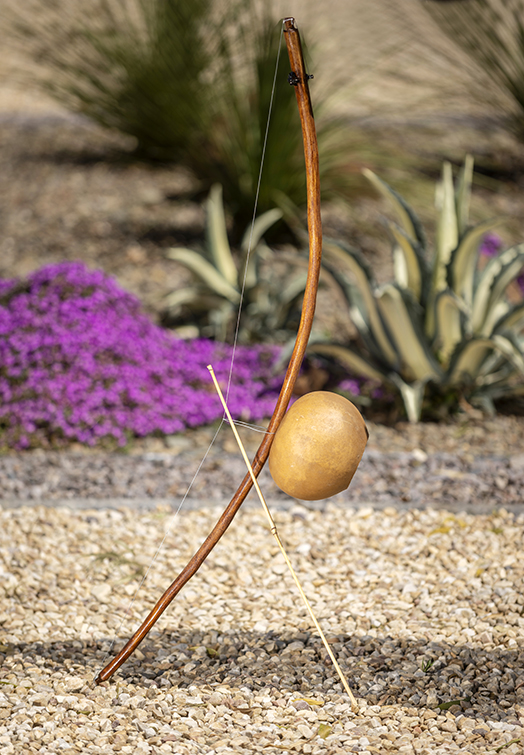23 September 2022
|
Story Anthony Mthembu
|
Photo iFlair Photography
 Umakhoyane: Indigenous South African instrument affiliated with the Zulu tribe.
Umakhoyane: Indigenous South African instrument affiliated with the Zulu tribe.
According to Dr Absolum Nkosi, Senior Lecturer in the
Odeion School of Music at the University of the Free State (UFS), “ancient traditional instruments form part of the African heritage”. As such, with Heritage Day upon us, it is imperative to highlight these South African indigenous musical instruments.
Some of the most prominent South African musical instruments currently in the possession of the UFS, include uhadi and umakhoyane, also referred to as ugubhu. At first glance, one would think that these instruments are the same. This would not be an incorrect assumption. In fact, these instruments share similarities in terms of purpose and how they have been used throughout their existence.
Similarities and differences between the instruments
For instance, both uhadi and umakhoyane (ugubhu) are instruments traditionally played by women. Dr Nkosi maintains that songs accompanied by any of these instruments are usually personal, as they cover topics such as love, family, and relationships. Furthermore, the songs that were sung with the assistance of these instruments, were also about a reflection of the individual’s mental state. As such, the fact that both instruments have a very soft sound aided in that reflective process.
However, there are key variations between these instruments. Uhadi is a single-string acoustic bow affiliated with the Xhosa tribe, whereas umakhoyane is a single-string acoustic bow affiliated with the Zulu tribe. In addition, umakhoyane possesses a bridge in the middle that uhadi does not. Furthermore, there is also a difference in the sound produced by the two instruments. “Uhadi produces one sound when it is played with the string openly without touching it; you can then get the second sound by pinching and releasing the string using the index finger and a thumb. However, umakhoyane produces two notes when playing the string on the upper and the lower level. The bridge in the middle of the string divides it into an upper part (low tone) and a lower part (high tone),” Dr Nkosi indicated.
It is imperative to note that these instruments have adapted over time. In fact, they have been used in genres such as Jazz and contemporary Afro music. Therefore, Dr Nkosi believes that the preservation of these indigenous instruments is essential, as it keeps the African musical identity alive.